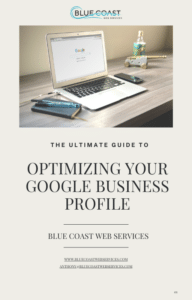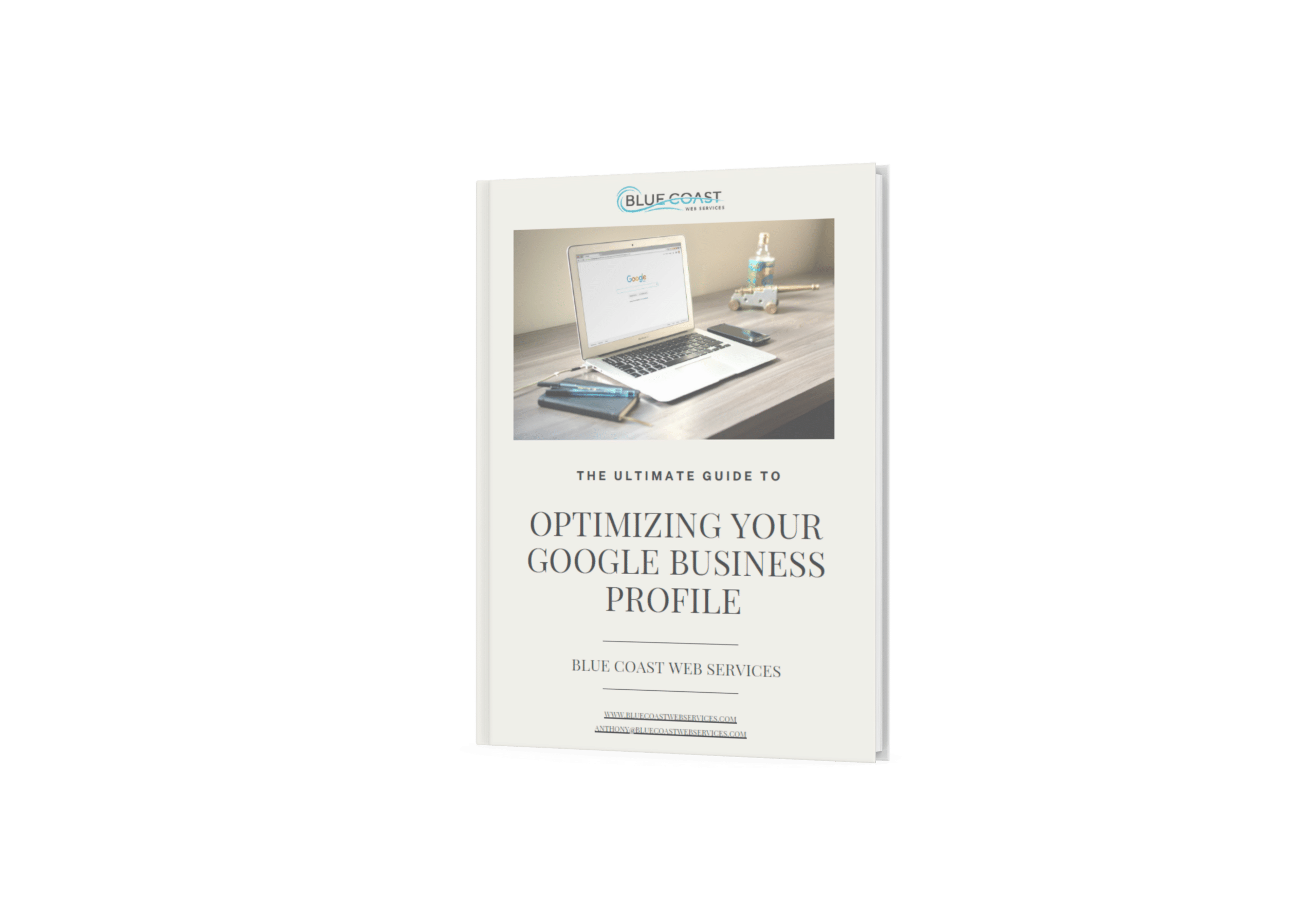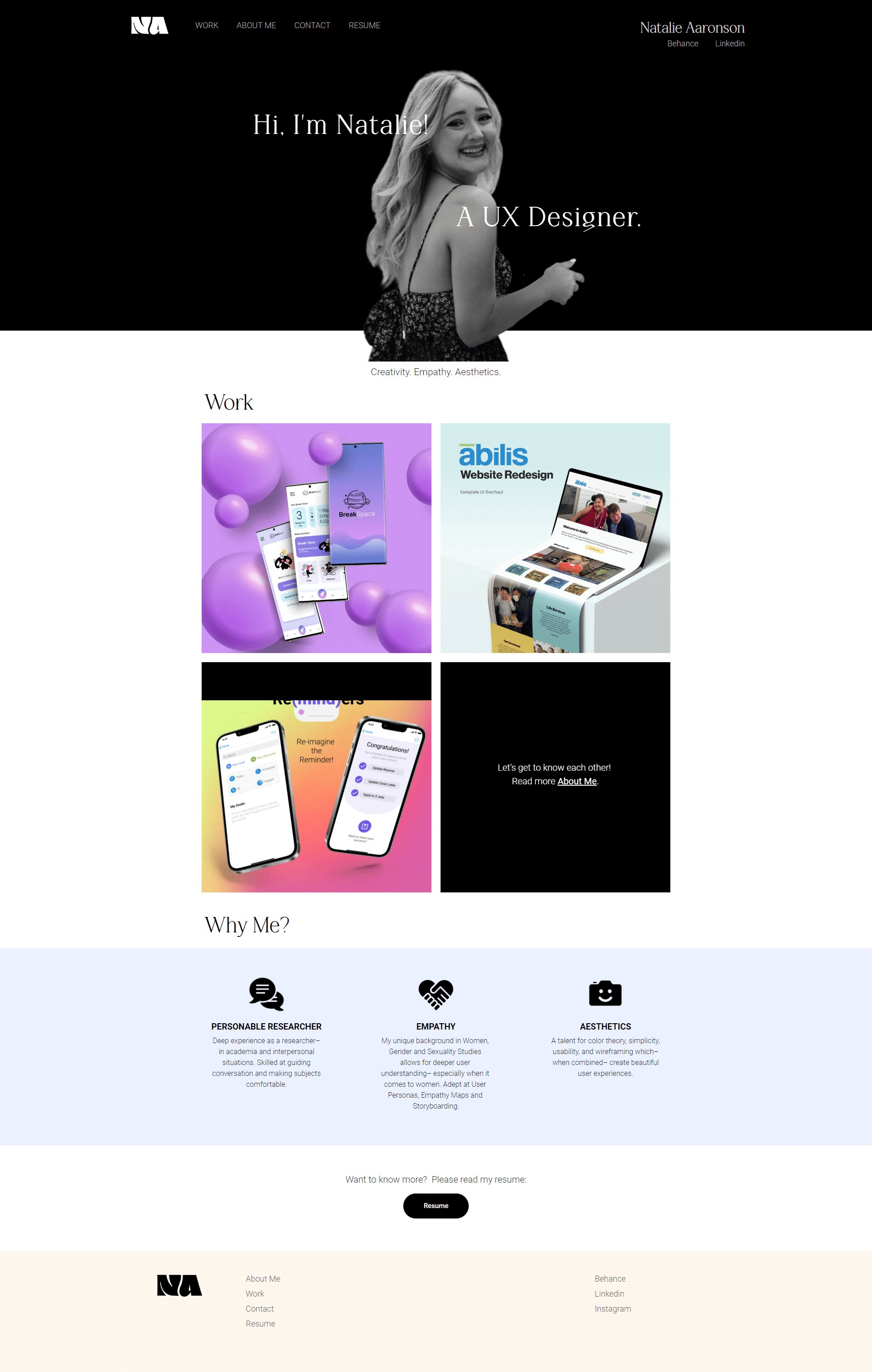Importance of a Strong Web Presence
As a small business owner, having a strong web presence is crucial in today’s digital landscape. An effective online presence can help you reach a wider audience, increase brand visibility, and drive more customers to your business. Let’s explore the benefits of having an online presence, the impact of web design on conversions, and the significance of mobile-friendly websites.
The Benefits of Having an Online Presence
Establishing an online presence offers numerous advantages for small businesses. It allows you to showcase your products or services, provide essential information to potential customers, and build credibility in your industry. By having a well-designed website, you can create a professional image and stand out from competitors.
Moreover, an online presence enables you to expand your customer base beyond your local area. With the internet’s global reach, you can attract customers from different regions or even internationally. This opens up new avenues for growth and revenue generation.
The Impact of Web Design on Conversions
Web design plays a vital role in driving conversions and sales. When websites are designed with user experience in mind, studies have shown that conversions and sales can see a growth of up to 200% (Bloomtools). A well-designed website can engage visitors, guide them through the sales funnel, and ultimately encourage them to take action.
Elements such as intuitive navigation, clear call-to-action buttons, and visually appealing layouts contribute to a positive user experience. By making it easy for visitors to find information and make purchases, you can increase the likelihood of conversions and customer satisfaction.
The Significance of Mobile-Friendly Websites
In today’s mobile-centric world, having a mobile-friendly website is no longer optional. A staggering 57% of internet users say they wouldn’t even recommend a business with a poorly designed mobile website (Bloomtools). With the rise of smartphones and tablets, people expect seamless browsing experiences across devices.
Optimizing your website for mobile devices is essential to provide a smooth user experience and cater to the growing mobile audience. Mobile traffic accounted for 52.2% of global internet traffic in 2018, surpassing desktop traffic for the first time (Search Engine Journal). If your website is not mobile-friendly, you risk losing potential customers who may abandon your site due to poor usability or slow loading times.
A mobile-friendly website should have responsive design, meaning it adapts seamlessly to different screen sizes. This ensures that your content and images are displayed correctly and that users can navigate easily with touch-screen devices.
In conclusion, a strong web presence is essential for small businesses seeking growth and success. By investing in effective web design, you can enhance user experience, increase conversions, and cater to the mobile audience. Don’t underestimate the power of your online presence, as it can serve as a valuable marketing tool to attract and engage customers.
Elements of Effective Web Design
When it comes to creating a successful online web presence for your small business, effective web design is essential. A well-designed website can greatly impact user experience, engagement, and ultimately, the success of your business. In this section, we will explore three key elements of effective web design: user experience and usability, web accessibility for all users, and mobile optimization for a better user experience.
User Experience and Usability
User experience (UX) and usability are crucial aspects of web design that directly impact how visitors interact with your website. When websites are designed with user experience in mind, conversions and sales have seen a growth of up to 200% Bloomtools. A positive user experience ensures that visitors can easily navigate through your website, find the information they need, and complete desired actions, such as making a purchase or contacting your business.
To enhance user experience and usability, consider the following:
- Clear and intuitive navigation: Ensure that your website’s navigation is easy to understand and navigate, with clear menu labels and organized content structure. This helps visitors find what they’re looking for quickly and effortlessly.
- Consistent branding: Maintain a consistent visual identity throughout your website to build trust and familiarity with your brand. Use consistent colors, fonts, and imagery that align with your brand’s identity.
- Engaging and accessible content: Create compelling and well-structured content that is easy to read and understand. Use headings, bullet points, and short paragraphs to improve readability. Additionally, prioritize accessibility to ensure that your website is usable by people with disabilities, including those with visual, auditory, motor, and cognitive impairments Source.
- Fast loading speed: Optimize your website’s loading speed to provide a seamless experience for your visitors. Studies show that if your pages take more than 3-5 seconds to load, you can expect up to a 40% bounce rate Bloomtools.
Web Accessibility for All Users
Web accessibility is an important consideration in web design. It ensures that websites are usable by people with disabilities, allowing them to access and navigate your content. Making your website accessible not only expands your potential audience but also demonstrates inclusivity and compliance with accessibility standards.
To improve web accessibility, consider the following:
- Provide alternative text for images: Use descriptive alt text for images to assist visually impaired users who rely on screen readers to access website content.
- Use descriptive link text: Avoid using generic phrases like “click here” for links. Instead, use descriptive text that provides context about the linked content.
- Ensure color contrast: Use sufficient color contrast between the text and background to make it readable for individuals with visual impairments.
- Implement keyboard navigation: Ensure that all website functionality can be accessed using a keyboard, as some users may have difficulty using a mouse.
Mobile Optimization for Better User Experience
In today’s mobile-driven world, mobile optimization is crucial for providing a better user experience and reaching a wider audience. Mobile traffic accounted for 52.2% of global internet traffic in 2018, surpassing desktop traffic for the first time Search Engine Journal. The majority of users are unlikely to return to a website if they had a poor mobile experience Search Engine Journal. Therefore, it’s crucial to ensure that your website is mobile-friendly.
To optimize your website for mobile devices, consider the following:
- Responsive design: Implement responsive web design, which allows your website to adjust its layout and content based on the user’s device. This ensures a seamless experience across different screen sizes and devices Search Engine Journal.
- Mobile-friendly navigation: Optimize your website’s navigation for mobile users by using a simplified menu structure, collapsible sections, and clear calls-to-action that are easy to tap on a touchscreen.
- Streamlined content: Prioritize essential content and optimize it for mobile consumption. Streamline your text, use concise headings, and minimize the need for excessive scrolling.
By incorporating these elements of effective web design into your online presence, you can create a website that offers a seamless user experience, is accessible to all users, and provides optimal performance on mobile devices. Remember, a well-designed website not only attracts and engages visitors but also contributes to the overall success of your small business’s online presence.
Best Practices for Web Design
To create a successful online presence, it’s important to implement best practices for web design. By prioritizing user experience, creating engaging content, and incorporating responsive design, you can optimize your website for a positive and impactful online presence.
Prioritizing User Experience and Navigation
When designing your website, it’s essential to prioritize user experience (UX) and navigation. A well-designed website that is easy to navigate can significantly enhance user satisfaction and encourage visitors to explore further. According to Bloomtools, websites designed with user experience in mind have seen a growth in conversions and sales of up to 200%.
To prioritize user experience and navigation, consider the following:
-
Intuitive Navigation: Ensure that your website’s navigation is clear, organized, and easy to understand. Use descriptive menu labels and logical hierarchies to help users find the information they’re looking for quickly.
-
Responsive Design: Optimize your website for different devices and screen sizes. With mobile traffic surpassing desktop traffic in recent years (Search Engine Journal), it’s crucial to ensure that your website is responsive and provides a seamless experience across all devices.
-
Fast Loading Speed: Users expect websites to load quickly. If your pages take more than 3-5 seconds to load, you can expect a high bounce rate (Bloomtools). Optimize your website’s loading speed by compressing images, minimizing code, and leveraging caching techniques.
Creating Engaging and Accessible Content
Engaging and accessible content is a key component of effective web design. Compelling content not only captures users’ attention but also drives them to take desired actions. Meanwhile, online web design should prioritize accessibility to ensure that websites are usable by people with disabilities, as outlined by ADA Site Compliance.
Consider the following when creating content for your website:
-
Clear and Concise Messaging: Use clear and concise language to convey your message effectively. Avoid jargon, complex terminology, and lengthy paragraphs. Break up content into smaller sections and utilize headings, bullet points, and lists to enhance readability.
-
Engaging Visuals: Incorporate high-quality visuals such as images, videos, and infographics to enhance the visual appeal and engagement of your website. Ensure that visual elements are relevant, optimized for web viewing, and accessible to all users.
-
Accessibility Features: Implement accessibility features to make your website inclusive for all users. Provide alternative text for images, captions for videos, and descriptive links. Ensure that your website meets accessibility standards, allowing people with disabilities to navigate and understand the content.
Incorporating Responsive Design for Mobile-Friendliness
With mobile devices accounting for a significant portion of internet traffic, it’s crucial to incorporate responsive design into your web design strategy. Responsive design ensures that your website adapts and displays properly across various screen sizes and devices. By providing a seamless mobile experience, you can attract and retain mobile users, who make up a substantial portion of your potential audience.
To incorporate responsive design into your web design:
-
Mobile-First Approach: Design your website with a mobile-first approach, starting with the mobile layout and then scaling up to larger screens. This approach ensures that your website is optimized for mobile devices and provides a solid foundation for responsive design.
-
Flexible Grids and Layouts: Utilize flexible grids and layouts that adjust proportionally to different screen sizes. Use CSS media queries to apply different styles based on screen width, ensuring that your website looks and functions well across various devices.
-
Touch-Friendly Elements: Optimize your website’s interface for touch interactions by using larger buttons, ensuring adequate spacing between interactive elements, and avoiding small text that may be difficult to read on smaller screens.
By adopting these best practices for web design, you can create a strong online presence that engages users, provides a positive user experience, and encourages conversions. Remember to continuously monitor and analyze user behavior to identify areas for improvement and optimize your website accordingly.
The Role of User Testing in Web Design
User testing plays a pivotal role in the field of web design, providing valuable insights into how users engage with a website. By observing and dissecting user interactions, designers can identify areas that need improvement and make informed changes to enhance the overall user experience. Understanding the importance of user testing is essential for creating effective and user-friendly websites.
Understanding the Importance of User Testing
User testing helps uncover usability problems and enhances the user experience. By observing how users navigate through a website, designers can identify pain points and areas of confusion. This insight allows for targeted improvements to be made, resulting in enhanced engagement and decreased bounce rates. User testing helps ensure that the website aligns with user expectations and meets their needs, ultimately leading to higher satisfaction and increased conversions (Medium).
Different Methods of User Testing
There are various methods of user testing available, each providing a unique approach to gathering feedback and improving website design and user experience. Some common methods include:
-
A/B Testing: This method involves comparing two versions of a webpage to determine which performs better in terms of user engagement and conversion rates. It allows designers to make data-driven decisions by analyzing user behavior and preferences.
-
Usability Testing: Usability testing involves observing users as they interact with a website, completing specific tasks. By analyzing their actions, feedback, and difficulties encountered, designers gain valuable insights into areas that may require improvement.
-
Focus Groups: Focus groups involve gathering a small group of individuals who represent the target audience. Through discussions and guided activities, designers can obtain qualitative feedback, opinions, and suggestions for website improvement.
-
Surveys: Surveys are a cost-effective way to collect feedback from a larger audience. Designers can create targeted questionnaires to gather opinions, preferences, and suggestions for improving the website.
Each method has its advantages and can be tailored to specific objectives and target audiences. Defining clear and specific objectives before conducting user testing is crucial in selecting the most appropriate method, determining the required participants, and evaluating the success of the test using relevant metrics (Medium).
Analyzing and Implementing User Testing Results
Analyzing user testing results involves considering various metrics and data points to gain valuable insights into user behavior. Metrics such as task completion rates, user feedback, and heatmaps provide crucial information about how users navigate the website, where they encounter difficulties, and what elements need improvement. By analyzing these results, designers can make informed design changes to enhance the website and address user pain points.
Implementing user testing results involves incorporating the insights gained from user feedback into the website’s design. This may involve adjusting navigation elements, optimizing the placement of important information, enhancing the clarity of instructions, or improving the overall user interface. By implementing these changes, designers can create a website that aligns more effectively with user needs and preferences.
User testing is an iterative process, and continuous feedback and refinement are essential for maintaining an optimal user experience. By regularly conducting user testing and analyzing the results, designers can ensure that their web design decisions are user-centered and result in a website that is intuitive, user-friendly, and aligned with the needs and expectations of the target audience.
How Web Design Affects SEO
When it comes to online web design, it’s important to consider its impact on search engine optimization (SEO). The design and functionality of your website can significantly affect its visibility and ranking on search engine results pages (SERPs). In this section, we will explore the relationship between web design and SEO, focusing on the impact of responsive web design, mobile-friendly websites, and design considerations for SEO optimization.
The Impact of Responsive Web Design on SEO
Responsive web design plays a crucial role in enhancing your website’s SEO. A responsive design ensures that your website is mobile-friendly and adjusts seamlessly to different screen sizes and devices. This is highly beneficial as it improves the website’s mobile-friendliness, which is a key ranking factor in search engine algorithms (Search Engine Watch).
Google has officially stated that having a mobile-friendly website is a significant factor in ranking higher in search results (Search Engine Watch). With mobile traffic surpassing desktop traffic, a responsive design is crucial to cater to the growing number of mobile users (Search Engine Watch).
By implementing responsive web design, you improve your website’s loading speed, a crucial factor for both user experience and search engine rankings. Websites that load quickly tend to have lower bounce rates and higher conversion rates, ultimately positively impacting your SEO efforts (Search Engine Journal).
Mobile-Friendly Websites and Search Rankings
The importance of mobile-friendly websites cannot be overstated. Google and other search engines prioritize mobile-first indexing, meaning they evaluate and rank websites primarily based on their mobile version. A mobile-friendly website is more likely to rank higher in search results, providing better visibility and attracting more organic traffic to your site.
A mobile-friendly website not only improves your SEO but also enhances the user experience. Users are more likely to engage with a website that is easy to navigate, loads quickly, and provides a seamless browsing experience across different devices. This positive user experience leads to increased time on site, lower bounce rates, and ultimately higher conversions.
Design Considerations for SEO Optimization
When designing a website with SEO in mind, there are several considerations to keep in mind. First and foremost, prioritize a clean and organized design that allows for easy navigation. A well-structured website with clear navigation menus and logical hierarchy makes it easier for both users and search engines to find and understand your content.
Additionally, incorporate relevant keywords naturally throughout your website’s content. Conduct thorough keyword research to identify the terms and phrases your target audience is using to search for businesses or information similar to yours. Strategically placing these keywords in your headings, titles, meta descriptions, and body content can improve your website’s visibility in search results.
Optimizing images by using descriptive alt text and compressing file sizes can improve page loading speed and overall user experience. Remember that search engines cannot interpret images, so providing alt text helps them understand the content and context of the images on your website.
By designing your website with SEO in mind, you are creating a strong foundation for improved visibility, user experience, and ultimately, the success of your online presence. Consider consulting with a professional web design agency to ensure your website is optimized for both aesthetics and SEO.














